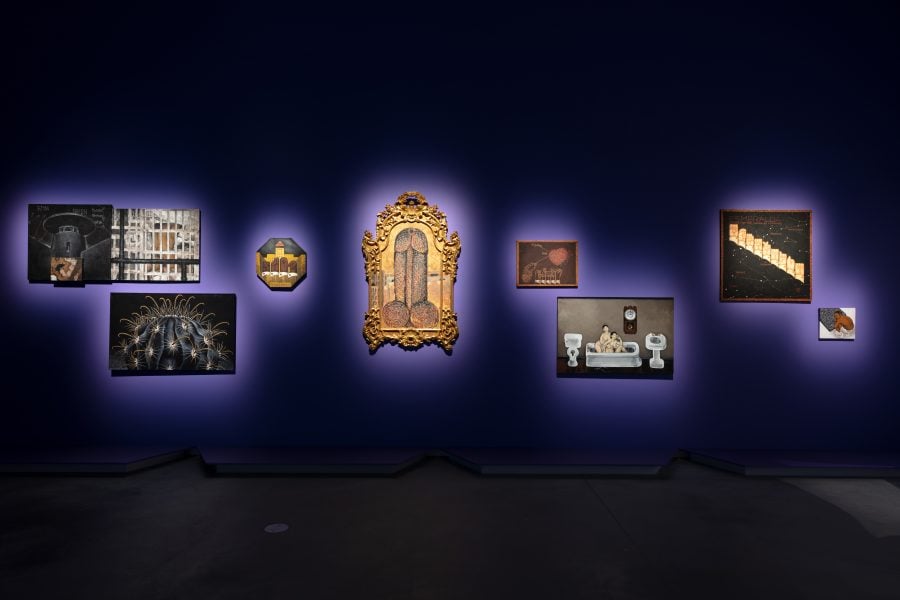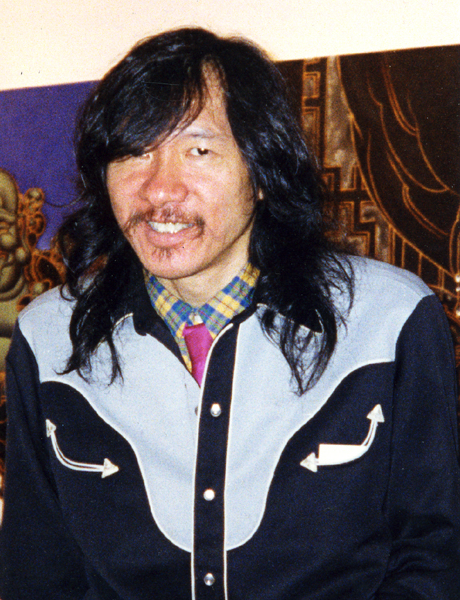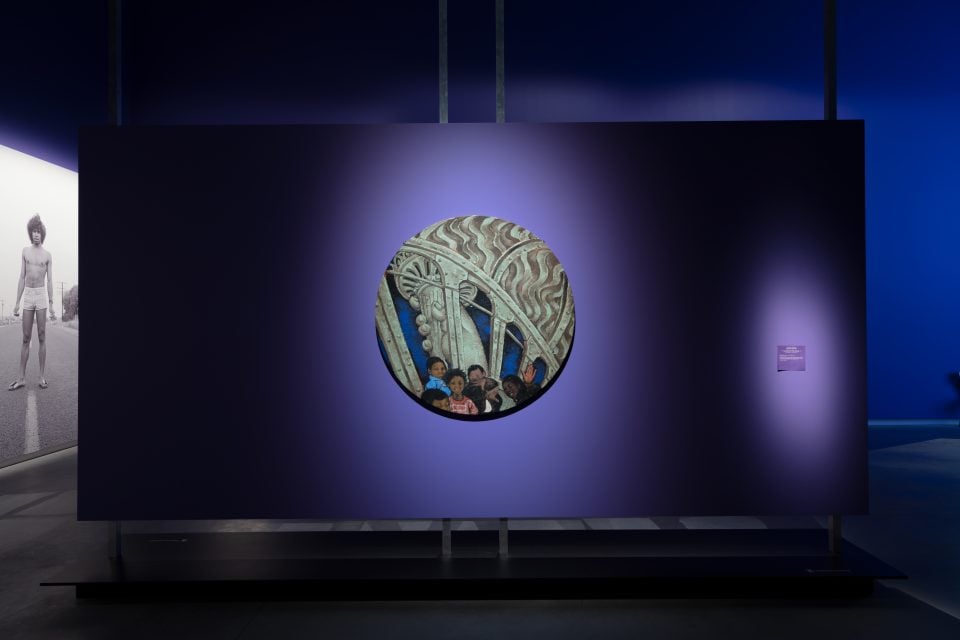Chau Chak Wing Museum at the University of Sydney
Saturday Night, 1992
acrylic on linen
LA2 – Malicious Mischief (collaboration with LA II), 1997
acrylic on canvas
A Near Miss, 1983
acrylic on canvas
Untitled, 1990
acrylic on canvas
Ferocactus peninsulae v. viscainensis, 1997-98
acrylic on canvas
Presentation at the 24th Biennale of Sydney was made possible with generous support from Terra Foundation for American Art and the assistance of William Lim, Living Limited. Courtesy William Lim c/o Living Limited
Mintaka, 1990
acrylic on canvas
Mi Vida Loca, 1991
acrylic on canvas
Presentation at the 24th Biennale of Sydney was made possible with generous support from Terra Foundation for American Art. Courtesy Sunpride Foundation, Hong Kong
Esmeralda: Songs for the Hearing Impaired, 1982
acrylic on canvas
Untitled (Kids at Statue of Liberty), 1992
acrylic on canvas
Presentation at the 24th Biennale of Sydney was made possible with generous support from Terra Foundation for American Art. Courtesy Alan Lau
Throughout the 1980s and 1990s, the communities of New York’s Lower East Side (known as Loisaida) and Chinatown faced the combined forces of the HIV/AIDS epidemic and gentrification. Straddling the line between observer and voyeur, Wong, a queer artist, spoke openly about his sense of living outside the world he documented.
A self-styled American cowboy, Wong was enthralled by life on the periphery, with prison scenes, racialized bodies, brick walls, and odes to broken hearts recurring throughout his work. Alongside carefully rendered scenes of graffiti and street culture, stylised symbols of American Sign Language (ASL) (reminiscent of covert signals used by the city’s gay community), astrological signs, constellations, as well as Chinese ideograms are repeated. The Lower East Side of Wong’s paintings, where codes of the street met codes of the cosmos, much like a dream to its dreamer, was out of his reach yet of his making. After a career spent pursuing an understanding of both America and his place in it, Wong died of an AIDS-related illness in his parents’ care in San Francisco. Cacti and succulents planted in his mother’s garden appear in one of his final series as a beautiful, resilient and alien form.


